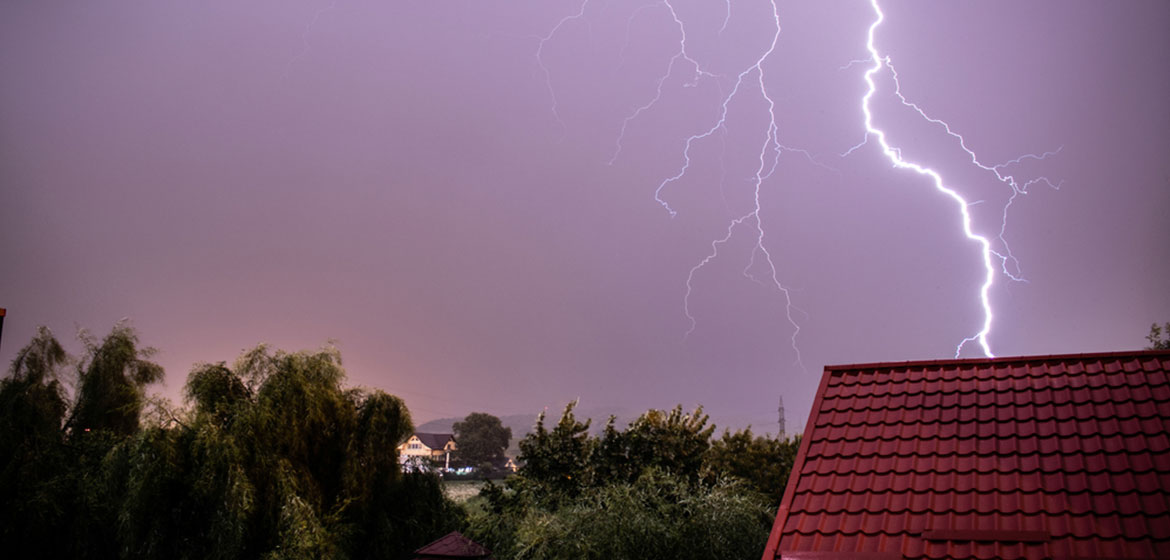The Impact Of Lightning Damage On Electronics

Lightning is a natural phenomenon that can have a significant impact on electronic devices. With the increasing reliance on technology in our daily lives, understanding the effects of lightning damage on electronics becomes crucial. In this post, we will explore the various ways lightning can damage electronic devices and discuss the potential consequences.
Power Surge
One of the primary ways lightning damages electronics is through power surges. When lightning strikes a power line or an electrical grid, it can generate a sudden surge of electrical energy. This surge can travel through power lines and enter homes or businesses, damaging any connected electronic devices. The high voltage can overwhelm the sensitive circuitry of electronics, causing irreparable damage.
Overvoltage
Lightning-induced power surges often result in overvoltage situations. Overvoltage occurs when the electrical supply exceeds the safe operating range of electronic devices. Components such as capacitors and transistors can be damaged or destroyed due to the excess voltage. Overvoltage can also lead to insulation breakdown and short circuits, further worsening the damage.
Direct Strike
While less common, direct lightning strikes on electronic devices can cause catastrophic damage. When a device is directly struck, the high electrical current of the lightning can melt or vaporize components instantly. The extreme heat generated during a direct strike can result in irreparable damage, rendering the device completely useless.
Electromagnetic Interference (EMI)
Even if a device is not directly hit by lightning, the electromagnetic field produced during a nearby strike can cause electromagnetic interference (EMI). EMI can disrupt the normal functioning of electronic devices by inducing unwanted voltage or current fluctuations. This interference can lead to data corruption, system crashes, or even permanent hardware damage.
Transient Voltage
Transient voltage, also known as voltage spikes or voltage transients, can occur during a lightning strike. These brief, high-voltage pulses can enter electronic devices through power lines or communication cables. Transient voltage can overwhelm the protective measures in place, causing damage to sensitive components like integrated circuits (ICs), microprocessors, and memory modules.
Indirect Effects
Lightning damage can also occur indirectly through power line fluctuations or induced currents. When lightning strikes nearby power lines, the resulting power fluctuations can reach connected devices. These fluctuations, known as voltage sags or brownouts, can disrupt the normal operation of electronic devices and potentially lead to hardware failures.
Fire Hazard
In addition to damaging electronic devices, lightning strikes can pose a significant fire hazard. The intense heat generated during a strike can ignite flammable materials in close proximity to the struck area, including electronic devices. The combination of electrical damage and fire can result in the total loss of the affected equipment and pose a threat to safety.
Surge Protection Measures
To mitigate the impact of lightning damage on electronics, surge protection measures are crucial. Surge protectors, which are devices designed to suppress excessive voltage, can be installed between the power source and electronic devices. These devices divert excess electrical energy to the ground, protecting connected devices from power surges and overvoltage situations.
Unplugging and Shielding
During thunderstorms, it is advisable to unplug electronic devices from power outlets and communication lines. This action minimizes the risk of lightning-induced damage. Shielding techniques, such as using surge protectors with built-in EMI filters or grounding conductive enclosures, can also help reduce the effects of lightning-related EMI.
Insurance Coverage
Given the potential for lightning damage, it is important to check insurance policies for coverage related to electronic devices. Many insurance providers offer coverage for lightning-induced damage as part of their homeowner’s or renter’s insurance policies. Understanding the terms and conditions of the coverage can help individuals recover the costs associated with repairing or replacing damaged electronics.
Lightning damage poses a significant threat to electronic devices due to power surges, overvoltage, direct strikes, electromagnetic interference, transient voltage, and other indirect effects. Understanding the potential consequences of lightning strikes on electronics empowers individuals and businesses to take necessary precautions, such as using surge protectors, unplugging devices during thunderstorms, and ensuring proper insurance coverage. By implementing these measures, we can mitigate the risks and safeguard our valuable electronic equipment from lightning-induced damage.